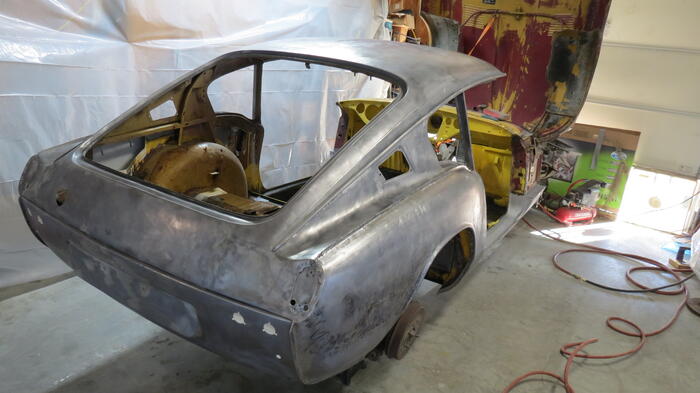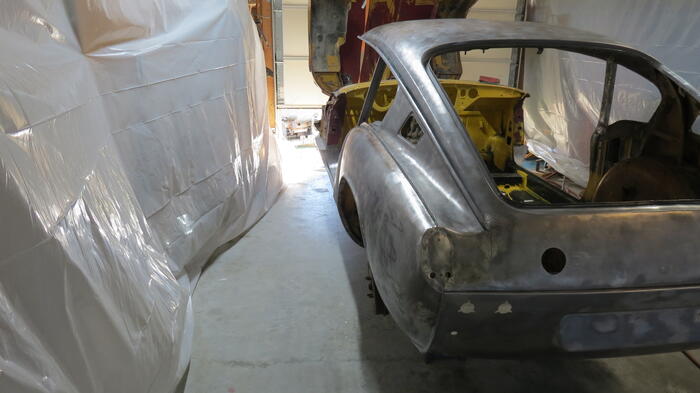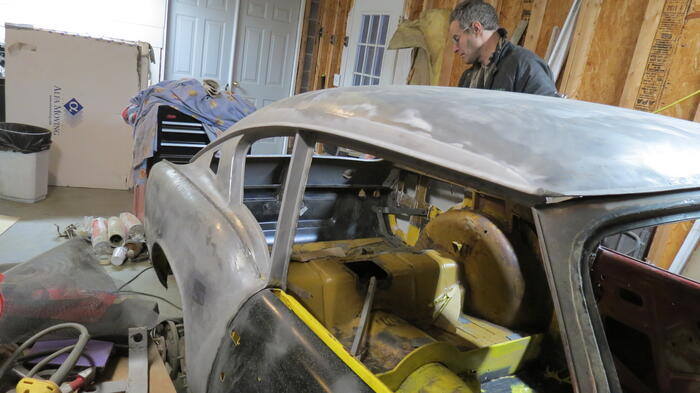With cold weather coming, and my garage not heated work on the car in the garage will likely slow or stop for awhile. In particular any priming will have to stop do to the cold. We wanted to get the bare metal parts of the car covered in primer before that happened. Since these would be the shinny surfaces of the car it was time to try our hand at spray painting. I had helped with a car in high-school (on a high-school budget). I don't remember much but I do remember it didn't go well. I've done my share of spray cans panting over my lifetime and had some success making a decent looking job with those (after lots of wet sanding). So using a spray gun would be an adventure. Good thing it's only the primer coat.
Sprayed on the epoxy primer and it went pretty well. We are using the Harbor freight automotive spray kit. The 3 compressors did a good job and the water separators seemed to be working. With our time crunch we didn't prep much of the inside of the car or the front bulkhead so those weren't painted. I did try to paint the upper rear valence on the inside. I quickly realized that climbing into the car to paint after the outside was coated wasn't a good plan (airline dragging against the side) and that meant the rear only got one coat. Which was ok as it appeared to be missing much of the ledge where it meets the lower valence and the upper part where the hatch rain gutter I couldn't see and so is probably not coated well.
The other thing I found tough was getting all the areas. Particularly tough were the hatch weather seal and rain gutter, insides of the fender pinch welds and inside the rain gutter along the sides of the roof. At one point (early in) I was standing in the hatch trying to spray looking from the inside towards the outside. This had some success. The roof rain gutter in the end looks impossible to get it all. I tried a bunch of angles and it just doesn't seem to get the inside of the part that curls over. This isn't much of a surprise as I had a tough time getting it sand blasted with the nozzle practically in the gutter and sand bounces everywhere. Paint doesn't seem to bounce so much. I'm thinking I'll have to use a small brush or q-tip or something to get that surface.
All in all I thought it went petty well. I'm sure it's got a pretty good orange peal to it but it's going to be block sanded so no worries there. Very happy to have the metal covered for the winter months.















